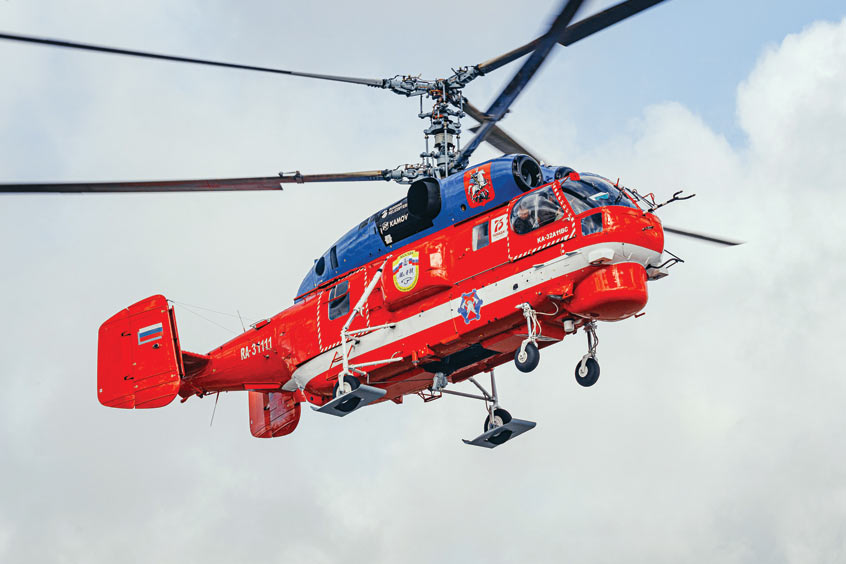Why visit ACE ’24?
Heliswiss International
Charter
Russian Helicopters, JSC
Aircraft
BAN's World Gazetteer
Russia
The latest variant Ka-32's modernisation programme includes a glass cockpit with an avionics system, more powerful VK-2500PS-02 engines and a new fire extinguishing system.
The technical solutions used in the new glass cockpit of Ka-32A11M have already been tested on the Ansat and Mi-38 civil multipurpose helicopters, and will facilitate the work with additional navigation, optoelectronic and search equipment that can be installed on the helicopter. Pilots will also be able to use night vision goggles.
With the new VK-2500PS-02 engines, the rotorcraft will perform significantly better in hot and mountainous environments. According to design calculations, its load capacity in such conditions will increase by 1,600 kg.
The new SP-32 fire extinguishing system, developed by specialists from the National Helicopter Center Мil-Kamov and KAPE, has received a number of significant advantages over foreign counterparts. The new tank holds four tons of water and is divided into four compartments. The patented digitally controlled discharge system allows the flaps to be opened in pairs or alternately and to adjust the opening angles, thereby increasing the water discharge time.
The system automation allows to accurately take in four tons of water in 60 seconds, as well as add up to 400 litres of foam agent. It has also been adapted to use a water cannon. In addition, all SP-32 systems are electrically heated, which allows them to be used in unprecedented winter conditions at temperatures as low as -20 degrees Celsius.
"The Ka-32 is recognised all over the world as one of the best helicopters for firefighting work. Nevertheless, even the best models need timely modernisation. We have managed to preserve the outstanding flight performance of the model, supplementing it with modern avionics and a new, more efficient and multifunctional fire extinguishing system. A prototype of Ka-32A11M will be present at the MAKS-2021 air show, and we are planning to start supplying the aircraft as early as next year,” stresses director general of Russian Helicopters Andrey Boginsky.
“The coaxial design of Ka-32 has a number of serious advantages. Above all, it provides stable hover mode and excellent crosswind stability. Due to the absence of a tail rotor, the helicopter dimensions are reduced, which makes it more manoeuvrable. In Switzerland, the Ka-32 is used as an air crane in the mountains. Equipping the helicopter with new, more powerful engines will benefit it by improving flight performance at altitudes above 2,000 metres of sea level," says Emil Hristov, project engineer, for the Kamov at Heliswiss International AG, a Swiss Ka-32 operator.
Serial production of Ka-32 machines is carried out by JSC Kumertau Aviation Production Enterprise (KAPE). Currently, over 240 machines have been built, which are operated in over 30 countries all over the world.